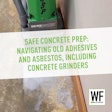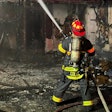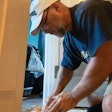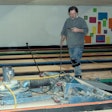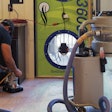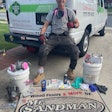
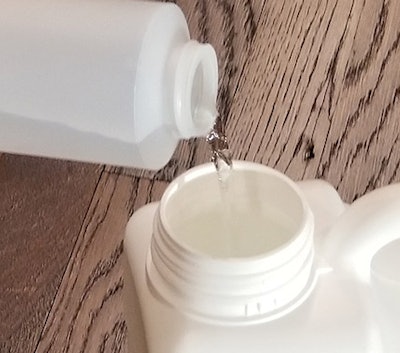 The 'dangerous ingredients' present in a waterborne finish pose very little, if any, risk to the homeowner.
The 'dangerous ingredients' present in a waterborne finish pose very little, if any, risk to the homeowner.
On occasion we will get questions from homeowners who are questioning whether their wood floor finish is really "safe." In one example from earlier this year, someone was very suspicious of the two-component finish that a contractor had recommended. The customer had heard about some of the ingredients in the waterborne finish and was suspicious that even after the finish had cured, small bits of it wearing off the floor over time would become airborne and cause cancer. What are the facts about the risks those finishes pose to homeowners?
The short answer is that the "dangerous ingredients" present in a waterborne finish pose very little, if any, risk to the homeowner. Those ingredients, which include aziridine and isocyanate, when in liquid form and in high concentrations, do pose a health risk when proper precautions are not taken. This is why you do not see two-component waterborne finishes being sold at the big box stores like Lowe's and Home Depot. Finish manufacturers do not want to put these products in the hands of a homeowner out of concern that they will not heed the warnings on the labels and expose themselves to the potentially harmful chemicals like aziridine. Professional wood flooring contractors are aware of the precautions that need to be taken, such as using the proper personal protection equipment (gloves, safety glasses and respirators when necessary), to avoid being exposed to potentially harmful ingredients.
Finish manufactures also take precautions to reduce the risk of exposure to these chemicals for the professional wood flooring contractor by limiting the amount of the chemical(s) needed and also diluting the concentration of the chemical(s). In the case of aziridine, only 2–3 ounces of this chemical are used to catalyze 1 gallon of finish. Once the two components are mixed, the risk of exposure is greatly reduced. Isocyanate is also used in limited quantities and is diluted in low-toxicity glycols by the finish manufactures to limit the risk of exposure. Only 11–13 ounces of this isocyanate/glycol mix is used per gallon of finish, so, like aziridine, once it is mixed with the rest of the finish, the risk of exposure is greatly reduced.
RELATED: Wood Floor Finish 101: The Lowdown on Today's Finishes
For the homeowner, the risk of exposure to these chemicals is exponentially reduced. For one, the chemicals are no longer in liquid form. Since they are in a solid state it would be very difficult for them to be absorbed into a person's body, because exposure to a chemical typically occurs by absorption through the skin when the chemical is in liquid form or through the lungs when the liquid turns into a gas. Also, just like these chemicals are diluted by the finish manufacturers, then again diluted when mixed with the Part A of a finish, they are further diluted when they are applied to the floor. A typical gallon of waterborne finish will cover approximately 500 square feet of flooring—a very large area over which is spread 2–3 ounces of aziridine. So as the floor wears, only trace amounts of the finish is liberated from the floor, and the aziridine or isocyanate in the finish has already been consumed in the chemical curing process. Because of this, the chance of the homeowner becoming exposed to these chemicals is extremely minimal.
Pros, Protect YourselvesSome pros believe that when they are coating with waterborne coatings, they don't need to take any precautions, but that isn't true. You should protect your skin, always using gloves. You should also protect your lungs. As with every other product on the job site, read the label and the safety data sheet to be completely aware of what to use. The SDS should tell you which respirator to use. When in doubt, just call the manufacturer of your finish. |
















